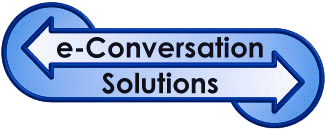For a business owner, having a great product or service is essential. However, many businesses are not successful, because they fail to ask the question “who has the money”.
While the answer seems obvious, often the person who is the user is not the payer. I know of a physical therapist who specializes in serving high school students. I was told that any athlete who wants to be successful, should use this person’s expertise. But does the student have the money? No, following the money, you start to understand that it’s not the teenager that needs to be convinced, but the parent.
A bioscience company specializes in providing “knowledge leadership”. They had a great relationship with the scientists working in key research fields. When I asked about how they monetize “knowledge leadership”, I got a bit of a push back and a blank stare.
An analytics expert has a great replacement product for a widely used viewer. The users thought it was a significant improvement. But, they did not control the purse strings? We did a pay per click campaign and got lots of views (technical experts) , but not too many buys. As it turned out, the folks with the money, were for the most part satisfied with what they had today.
So, what should you be doing?
First, you need to do the basics. Understand what problem your product or service solves. How do you solve it? And what makes your solution different?
Next, comprehend, what is your user (maybe not the payer) doing today. Is your solution so different that it will motivate the user to change?
Now, ask the question, who has the money?
When it comes to selling you need to intrigue the user enough to approve your solution. But, that’s only the start. You next need to find a way to get the user to become your advocate to the person with the money. When you create marketing material, it not only has to explain your proposition, but you need find a way to get the user to deploy it to the buyer.
The most important marketing piece is not what your product or service will do, but how your product or service will make the user more successful. For the personal trainer, a video showcasing a student champion is more powerful that demonstrating a technique. The parent will then be able to understand that if the money is spent, the athlete can also become a champion.
For our bioscience expert, focus on outcomes not knowledge. Provide real case solutions where customers have worked with your team, acquired the knowledge and implemented a viable commercial solution.
If possible, try to put dollars on to your what you have to offer. It is likely that that is how the payer is evaluated. Ask if there is budget allocated. Lastly, understand who is involved in the decision-making process. Complex sales often have a technical buyer, purchasing person and executive sponsor. You need to have different marketing materials for each one. Often it is useful to explain to user (your advocate) which pieces of material might be most effective with different members of the customers purchasing team.
Making a presentation or site visit? Try to insure that all of the folks involved in the sale are there. If a key person is missing, you may be wasting your time. If you are having a conference call, you can evaluate possible success by who connects with you. No executive sponsor on the call? You may have a problem. Not know who the executive sponsor is – you really have a problem.
In the end, you can have the best solution available, but if you can’t explain to the person with the money the value to both the user and organization; you will not be successful.



